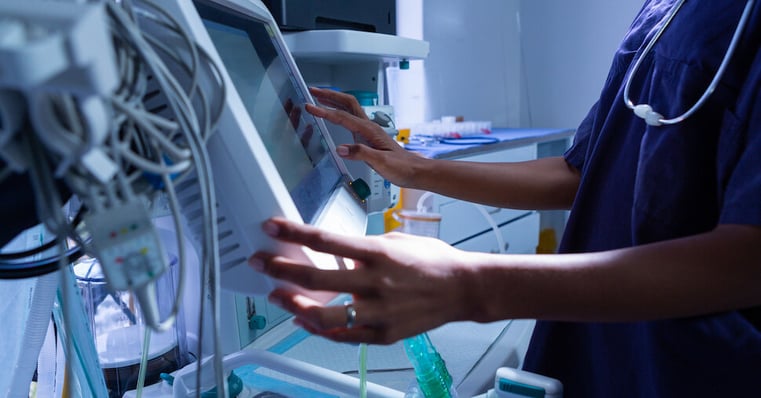Medical devices play a critical role in patient care and have become increasingly interconnected and software-driven. While this digital transformation brings many benefits, we also face with it new challenges, particularly in cybersecurity.
With the proliferation of connected medical devices, concern in many circles has steadily grown as vulnerabilities in these devices can bring severe consequences, ranging from data breaches to compromised patient safety, including injury and death.
This comprehensive guide explores the importance of medical device vulnerability management, how to prioritize vulnerabilities, and best practices for implementing a robust medical device vulnerability management program.
Understanding Medical Device Vulnerabilities
Medical device vulnerability management refers to the proactive process of identifying, assessing, and mitigating vulnerabilities in medical devices.
Vulnerabilities can come from many sources, including:
- software bugs
- design flaws
- outdated components
Regardless of their source, these vulnerabilities leave connected medical devices susceptible to exploitation by cybercriminals. Understanding and addressing these vulnerabilities is essential to safeguarding patient safety and maintaining the integrity of healthcare systems.
Which Vulnerabilities Should You Prioritize?
When you set out to mitigate medical device vulnerabilities, it's challenging to prioritize them. They each impact a diverse range of devices and carry their own risk of exploit and respective impact.
This makes a risk-based approach crucial, but, how should you approach deciding which vulnerabilities get mitigated first? Our experts suggest following these steps:
- Evaluate the severity of the vulnerability
- Evaluate its exploitability
- Assess its potential impact on patient safety and data security
Following this approach to remediating vulnerabilities allows organizations to focus their efforts on addressing the most critical vulnerabilities first.
Limitations of Traditional Cyber Vulnerability Management
Even though traditional cyber vulnerability management practices work well for general IT systems, they may not be so effective in securing connected medical devices.
The constraints of medical device regulation, patient safety considerations, and the need for real-time operation can limit the ability to apply immediate patches or updates.
All of these factors mean that we need specialized and tailored vulnerability management practices for medical devices.
Developing a Vulnerability Management Program
Benefits:
A robust medical device vulnerability management program offers numerous benefits, including:
- Enhanced patient confidence and safety
- Compliance with regulations
- Satisfaction of industry standards
- Improved reputation
- Reduced risk of data breaches
Best Practices for Implementation
Implementing an effective vulnerability management program for medical devices requires careful planning and adherence to best practices. Key elements include:
Inventory and Assessment:
Creating an inventory of all medical devices and conducting a comprehensive vulnerability assessment is the first step in identifying potential security risks.
Collaboration and Communication:
Effective vulnerability management requires collaboration between IT, biomedical engineering, and other relevant departments. Clear communication channels facilitate the exchange of information and ensure timely responses to emerging threats.
Patch Management:
Developing a strategy for timely and secure patch management is essential. This involves considering the impact of updates on device functionality and patient safety while balancing the need for security.
Medical Device Full-Lifecycle Vulnerability Management
Vulnerability management should extend throughout the entire lifecycle of a medical device, from design and development to deployment and decommissioning. Integrating security into each phase of the device lifecycle helps address vulnerabilities proactively and ensures a secure and resilient product.
Scanning Medical Devices for Security Vulnerabilities
In an effective medical device vulnerability management program, regular vulnerability scanning becomes crucial. Consider using specialized scanning tools designed for medical devices, which can help you identify potential weaknesses and ensure compliance with industry regulations.
Passive or Active: Which Approach Is Right For You?
There are two primary approaches to vulnerability scanning: passive and active. Passive scanning observes network traffic to detect vulnerabilities without generating any traffic of its own, making it less intrusive, but potentially less comprehensive.
Active scanning, on the other hand, actively sends requests to devices to detect vulnerabilities, providing more thorough results, but requiring careful management to avoid disruptions to critical medical devices.
Conclusion
Recap of Key Points Discussed in the Guide
Medical device vulnerability management is a critical practice for ensuring patient safety and data security in healthcare environments. It involves:
- Identifying and prioritizing vulnerabilities
- Developing a comprehensive vulnerability management program
- Implementing best practices throughout the medical device lifecycle
Importance of Ongoing Vulnerability Management in the Healthcare Industry
Given the ever-evolving threat landscape and the increasing complexity of medical devices, ongoing vulnerability management is becoming increasingly vital for the healthcare industry. We need regular assessments, collaboration, and proactive measures to protect patients, maintain trust, and comply with regulations.
Final Thoughts and Recommendations for Ensuring the Security of Medical Devices
In conclusion, the security of medical devices is not a one-time effort. Rather, medical device vulnerability management represents an ongoing commitment to patient safety and data protection.
Any effective cybersecurity risk management program requires the implementation of a well-defined vulnerability management program and staying informed about emerging threats.
By prioritizing vulnerability management and fostering a culture of proactive security, healthcare organizations can effectively address vulnerabilities and ensure the integrity of medical devices in an ever-changing digital landscape.
Learn More!
Dive deep into the critical crossroads of healthcare and cybersecurity with our groundbreaking report, 2023 State of Cybersecurity for Medical Devices and Healthcare Systems, co-researched and co-written with Health-ISAC and Securin, Inc.
Discover why an alarming 59% year-over-year spike in firmware vulnerabilities in medical devices could be the unseen iceberg threatening the industry's titanic shift to digitization.
From weaponized exploits already roaming wild to the looming financial ramifications of complacency, this report is a must-read for everyone vested in healthcare's future.
Don't be left in the dark – click now to illuminate the challenges and pave the way for a safer, secure tomorrow.
Subscribe to Our Blog
Get the latest posts delivered straight to your inbox weekly.
Share this
You May Also Like
These Related Stories

The Future of Medical Device Cybersecurity: An Interview with Larry Pesce

Embracing FDA 524B: Transforming the Cybersecurity Landscape for Medical Devices




